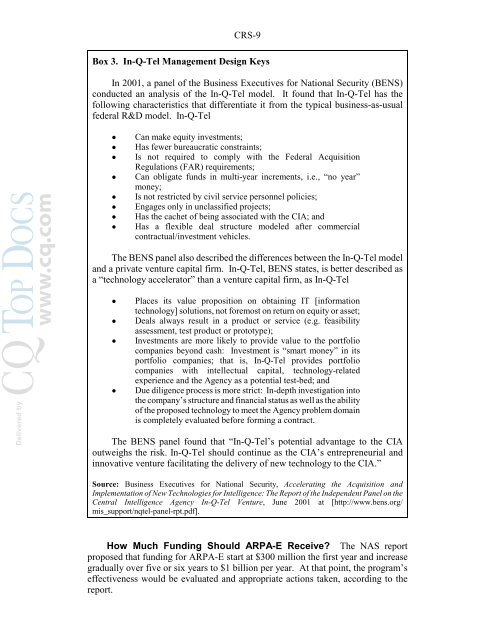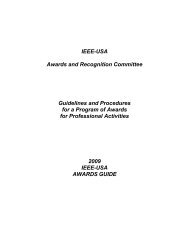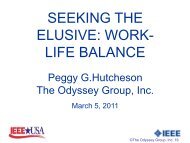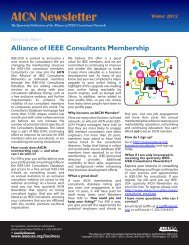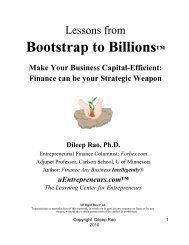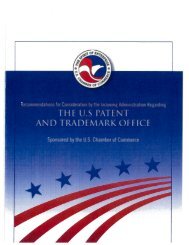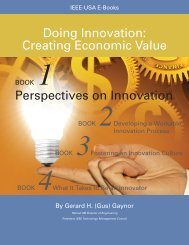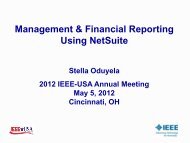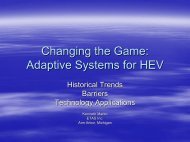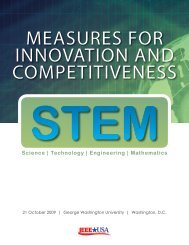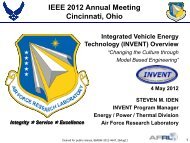Advanced Research Projects Agency - Energy (ARPA-E ... - IEEE-USA
Advanced Research Projects Agency - Energy (ARPA-E ... - IEEE-USA
Advanced Research Projects Agency - Energy (ARPA-E ... - IEEE-USA
Create successful ePaper yourself
Turn your PDF publications into a flip-book with our unique Google optimized e-Paper software.
CRS-9<br />
Box 3. In-Q-Tel Management Design Keys<br />
In 2001, a panel of the Business Executives for National Security (BENS)<br />
conducted an analysis of the In-Q-Tel model. It found that In-Q-Tel has the<br />
following characteristics that differentiate it from the typical business-as-usual<br />
federal R&D model. In-Q-Tel<br />
TOP DOCS<br />
www.cq.com<br />
Delivered by<br />
CQ<br />
! Can make equity investments;<br />
! Has fewer bureaucratic constraints;<br />
! Is not required to comply with the Federal Acquisition<br />
Regulations (FAR) requirements;<br />
! Can obligate funds in multi-year increments, i.e., “no year”<br />
money;<br />
! Is not restricted by civil service personnel policies;<br />
! Engages only in unclassified projects;<br />
! Has the cachet of being associated with the CIA; and<br />
! Has a flexible deal structure modeled after commercial<br />
contractual/investment vehicles.<br />
The BENS panel also described the differences between the In-Q-Tel model<br />
and a private venture capital firm. In-Q-Tel, BENS states, is better described as<br />
a “technology accelerator” than a venture capital firm, as In-Q-Tel<br />
! Places its value proposition on obtaining IT [information<br />
technology] solutions, not foremost on return on equity or asset;<br />
! Deals always result in a product or service (e.g. feasibility<br />
assessment, test product or prototype);<br />
! Investments are more likely to provide value to the portfolio<br />
companies beyond cash: Investment is “smart money” in its<br />
portfolio companies; that is, In-Q-Tel provides portfolio<br />
companies with intellectual capital, technology-related<br />
experience and the <strong>Agency</strong> as a potential test-bed; and<br />
! Due diligence process is more strict: In-depth investigation into<br />
the company’s structure and financial status as well as the ability<br />
of the proposed technology to meet the <strong>Agency</strong> problem domain<br />
is completely evaluated before forming a contract.<br />
The BENS panel found that “In-Q-Tel’s potential advantage to the CIA<br />
outweighs the risk. In-Q-Tel should continue as the CIA’s entrepreneurial and<br />
innovative venture facilitating the delivery of new technology to the CIA.”<br />
Source: Business Executives for National Security, Accelerating the Acquisition and<br />
Implementation of New Technologies for Intelligence: The Report of the Independent Panel on the<br />
Central Intelligence <strong>Agency</strong> In-Q-Tel Venture, June 2001 at [http://www.bens.org/<br />
mis_support/nqtel-panel-rpt.pdf].<br />
How Much Funding Should <strong>ARPA</strong>-E Receive? The NAS report<br />
proposed that funding for <strong>ARPA</strong>-E start at $300 million the first year and increase<br />
gradually over five or six years to $1 billion per year. At that point, the program’s<br />
effectiveness would be evaluated and appropriate actions taken, according to the<br />
report.


